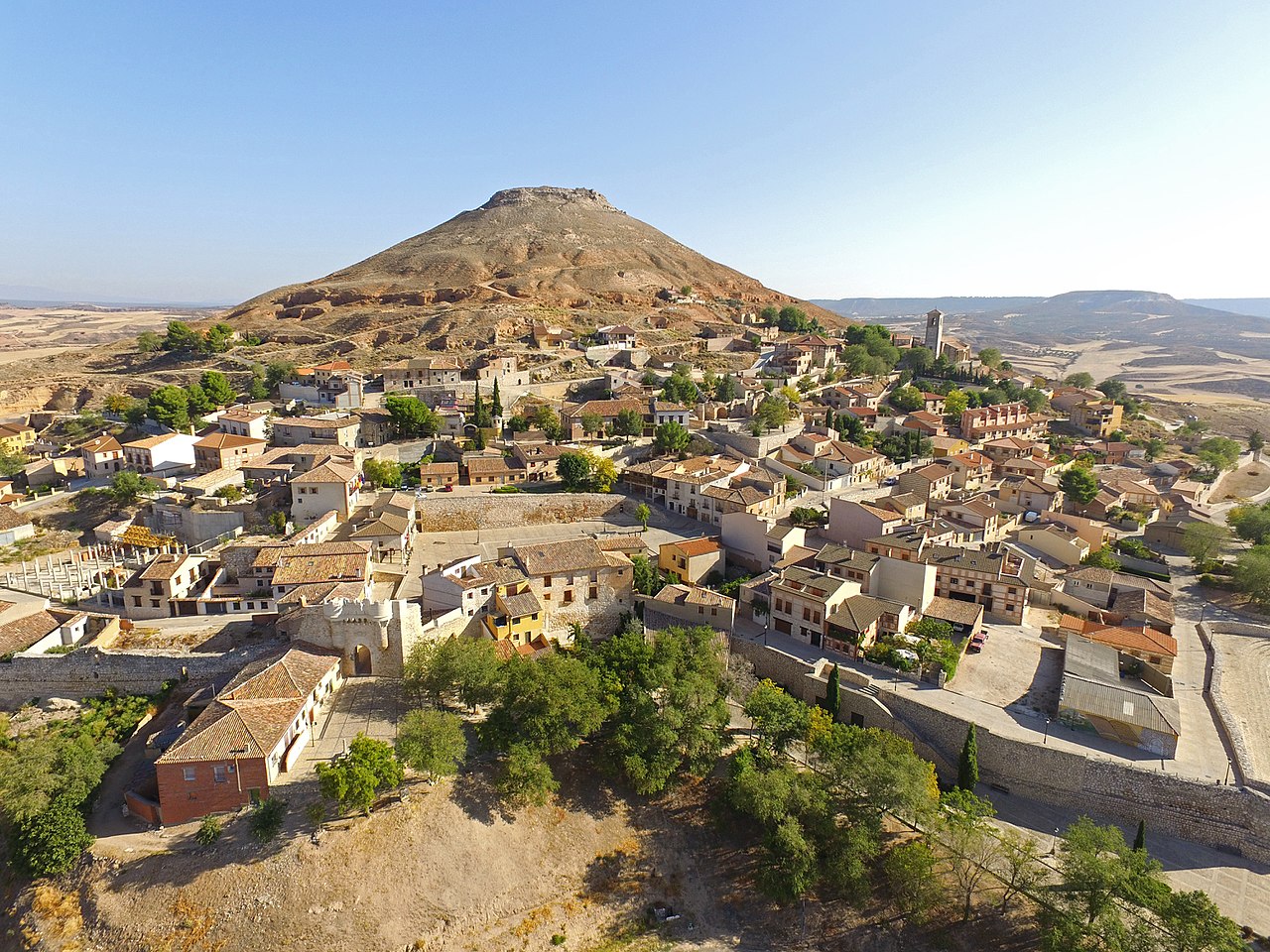
Located in the province of Guadalajara, the town of hita It is famous, above all, for its archpriest, to whom we owe the famous Good Love Book, one of the pinnacles of medieval Spanish literature.
A good part of its tourist attractions are based on its most illustrious native. But this town in the region of The Alcarria (where, by the way, we also advise you to see the lavender fields of brihuega among other wonders) also has many others. Inhabited since Roman times, it lived its greatest splendor in the Middle Ages during which, as a border area, it was space for coexistence between Hispanics, Jews and Muslims. Numerous monuments have remained from all of this in the area which, together with its natural environment, more than justify your trip to Hita. We are going to begin our tour of the town of Alcarria.
Archpriest's Square
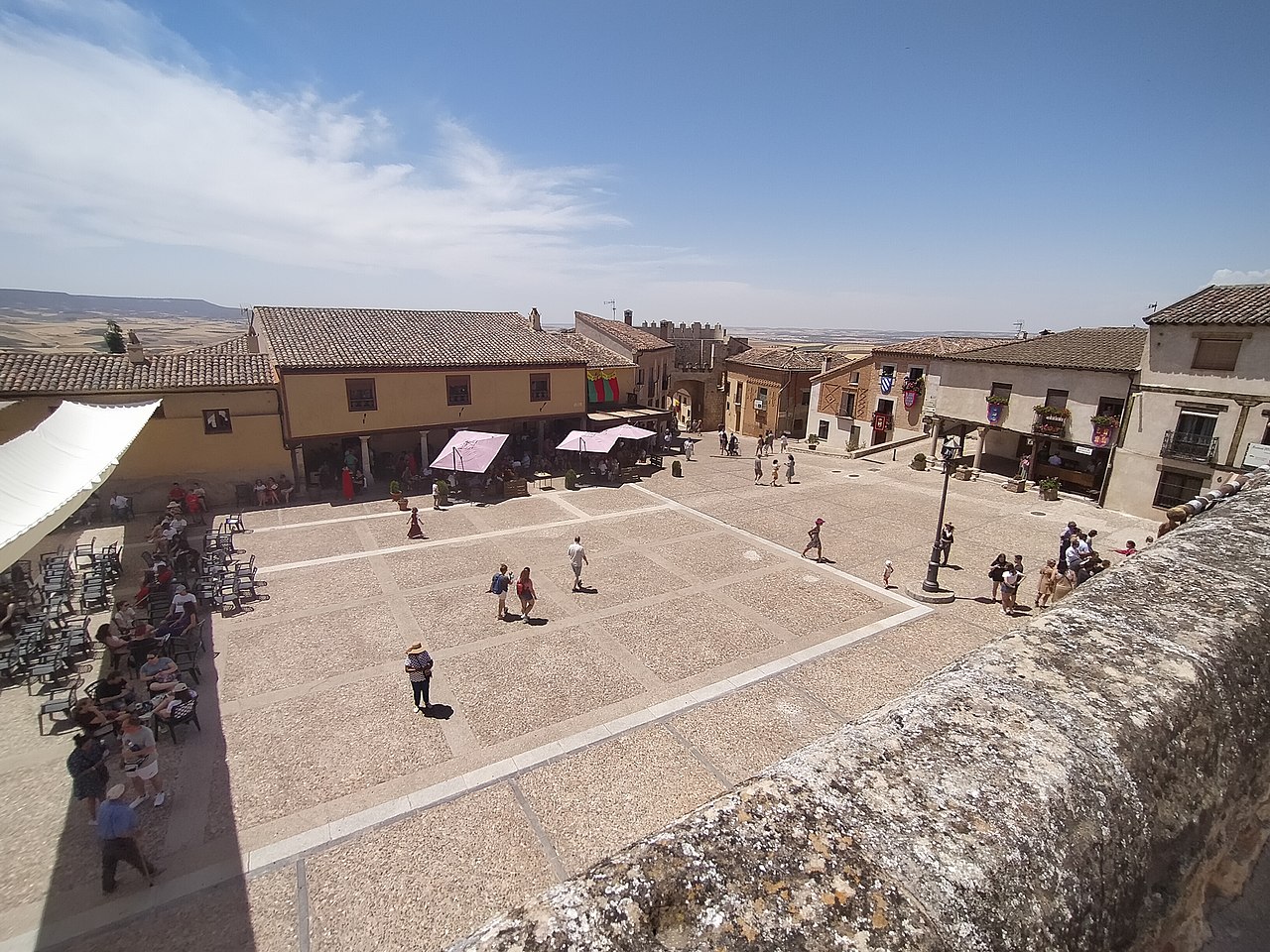
Square of the Archpriest of Hita
Also called Plaza Mayor, has been the vital nucleus of the town since the XNUMXth century. It was also the central part of the Jewish quarter, where its inhabitants traded their products and had their synagogue. It stands out for some unique elements such as a portico with wooden pillars in two lines or the wall that separates this space from the nearby Dona Endrina Square.
Also, you should pay attention to the houses with mudejar brick facades and especially in the call "Samuel Levy's Rampage", which was the home and business of this prominent character and which, like the entire urban complex of the square, has kept all its medieval flavour. In fact, it is one of the scenarios of the international festival dedicated to this time that the town celebrates and which we will talk about more times in this article.
The Puerta de Santa María and the ruins of the wall and the castle of Hita
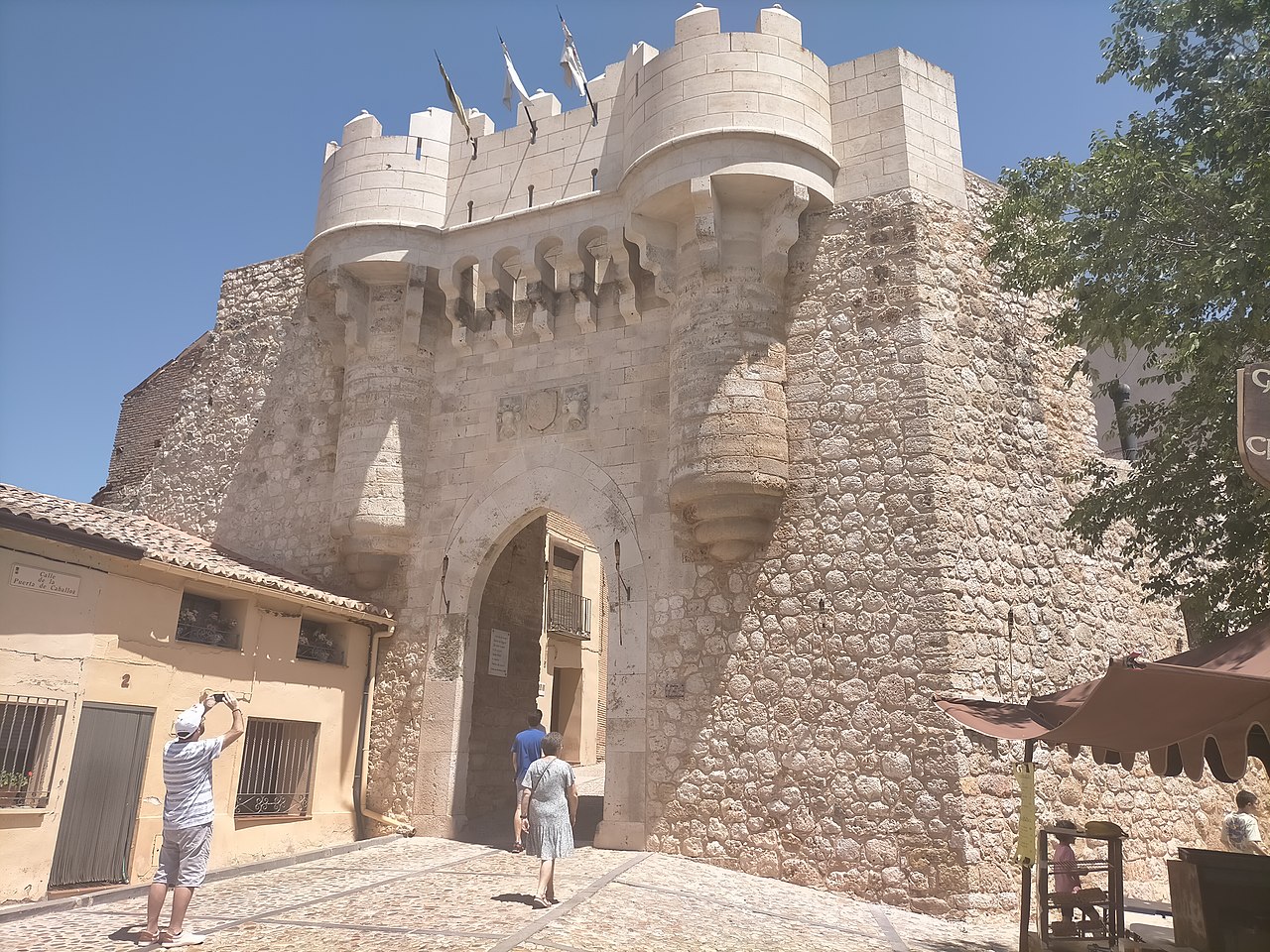
The beautiful door of Santa Maria
The town of Alcarria had a fortress that controlled it from the top of the hill on which it sits. It was built in the XNUMXth century on top of an old Muslim watchtower that dominated the confluence of the valleys of Henares and Badiel. By then, it even became Royal Treasury of Pedro I in the zone. That is, the place where the collected taxes were kept.
One hundred years later, the castle was improved by order of Íñigo López de Mendoza, the famous Marquis of Santillana, at that time Mr. de Hita. Then, he was added a large keep. However, it was already abandoned in the XNUMXth century and, finally, it would be demolished in the XNUMXth century. However, there is in the area a archaeological site in which pieces from the Muslim period dating from the XNUMXth century have been found. Also part of this are the ruins of the old medieval wall, which linked the castle to the town to also protect it. It was built with limestone masonry and had four entrances.
Of these, only one remains, which is also one of the most beautiful monuments in the town. It's about the door of Santa Maria, a beautiful example of Gothic military architecture that was built in the XNUMXth century. After the Civil War it was partially destroyed, but it has been completely restored. It is made up of a portal with a pointed arch flanked by two sentry boxes and a crenellated machicolation or cantilever for surveillance. Also, on the first is the heraldic shield of the Lopez de Mendoza along with two helmets that recreate the currency that the Marquis of Santillana himself used in arms tournaments.
The church of San Juan Bautista
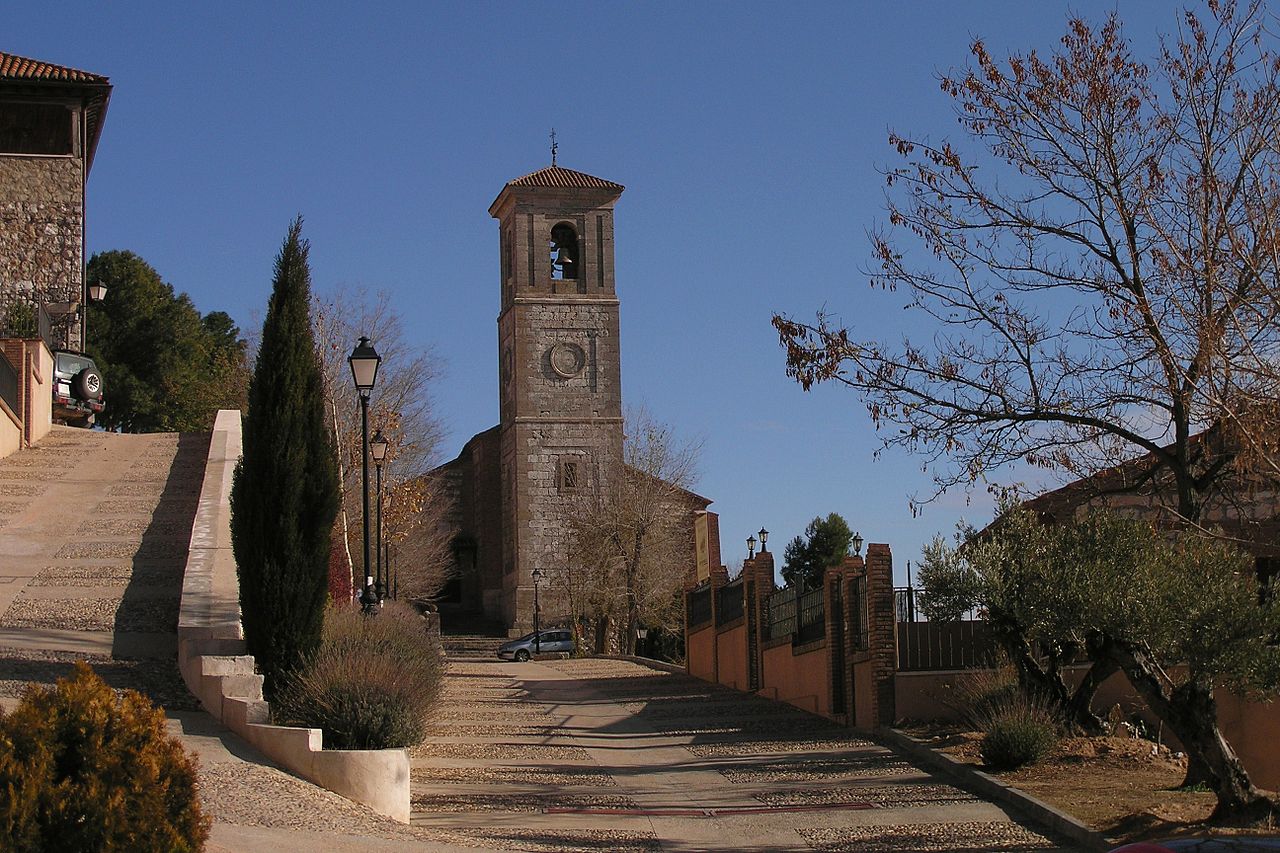
Church of San Juan Bautista
It is the main temple of the town and was built between the XNUMXth and XNUMXth centuries. shows a precious Moorish style, although its bell tower is Herrerian. However, its greatest jewels are found inside. Highlights in this Chapel of the Virgen de la Cuesta, patron saint of the town, with its coffered ceiling of octagonal coffers. Likewise, the wooden cover of the presbytery is very beautiful, with decoration in starry ties.
On the other hand, the Virgin is not the only image you should see in this church. There is also a Christ in the main altar, which is Renaissance, a baroque carving of the apostle San Juan and several paintings from this same period and from the neoclassical period. Finally, take a look at the tombstones belonging to the hidalgos of hita and in the two baptismal fonts. The one at the head is Romanesque and the other, located at the foot, is also Renaissance.
Other churches in Hita
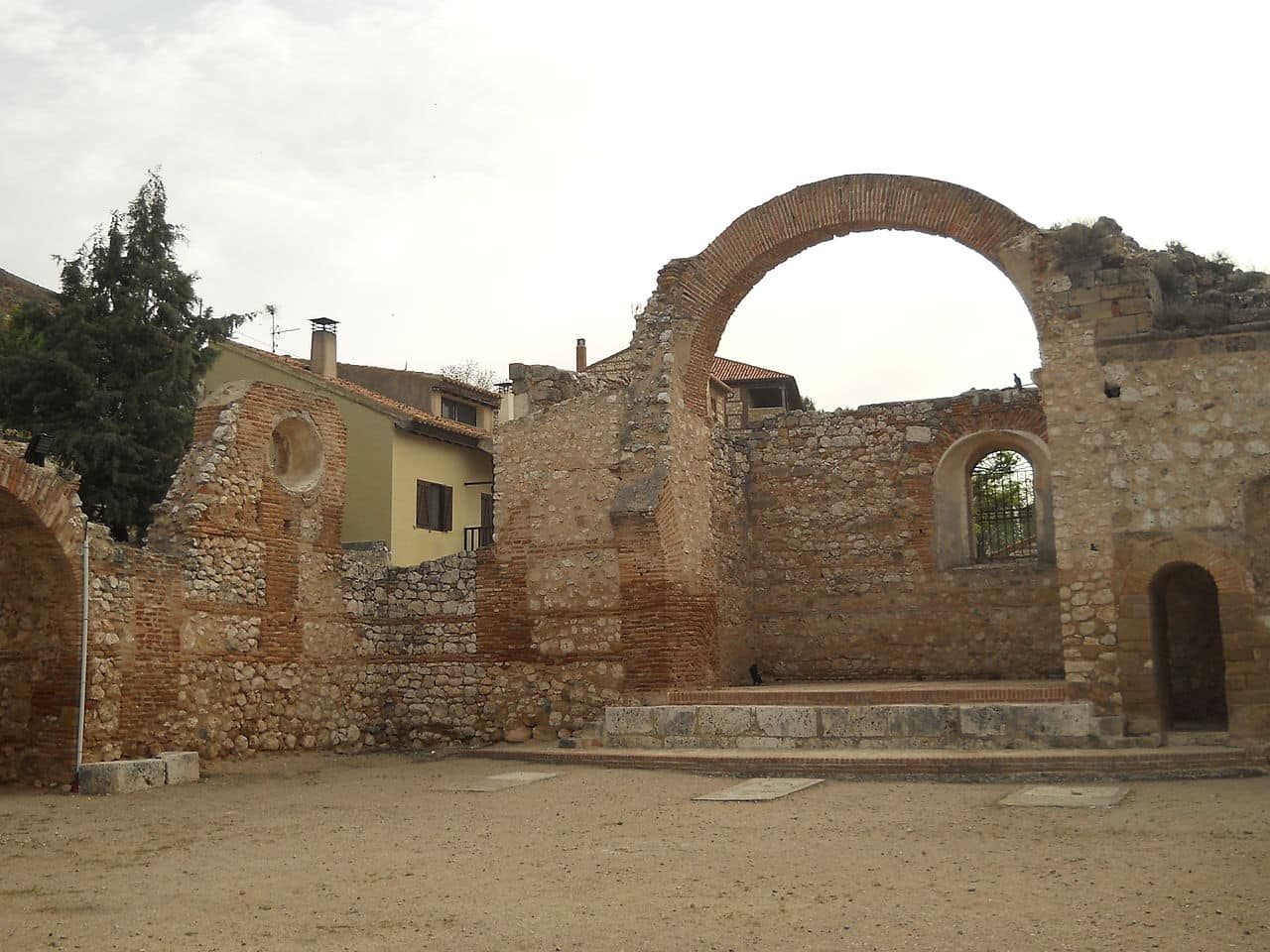
Remains of the church of San Pedro in Hita
The one we have just mentioned is not the only church in the town of Alcarria. However, unfortunately, the other, more valuable, has been in ruins since the Civil War. Is about that of San Pedro, built in Romanesque style as a burial place for the aforementioned hidalgos de Hita. In fact, the sepulchral slabs that we have mentioned were in this temple before moving on to that of San Juan Bautista.
However, on its pavement is still preserved that of the castle warden, Ferdinand Mendoza. It is one of the few that you can currently see next to part of its walls and to the façade of the Virgin's dressing room that was added to it in the XNUMXth century.
On the other hand, in the district of Padilla de Hita you have the church of san miguel, a simple construction from the XNUMXth century that responds to the so-called rural Romanesque of Guadalajara. It has a porticoed atrium that leads to the doorway and the temple, which is made up of a single nave with a rectangular headboard. Finally, the town also had another church, that of Santa Maria, which was demolished already in the XVIII. It was in the Mudejar style and housed the carving of the Virgen de la Cuesta that we have already mentioned when talking about the temple of San Juan.
The wineries and the palenque
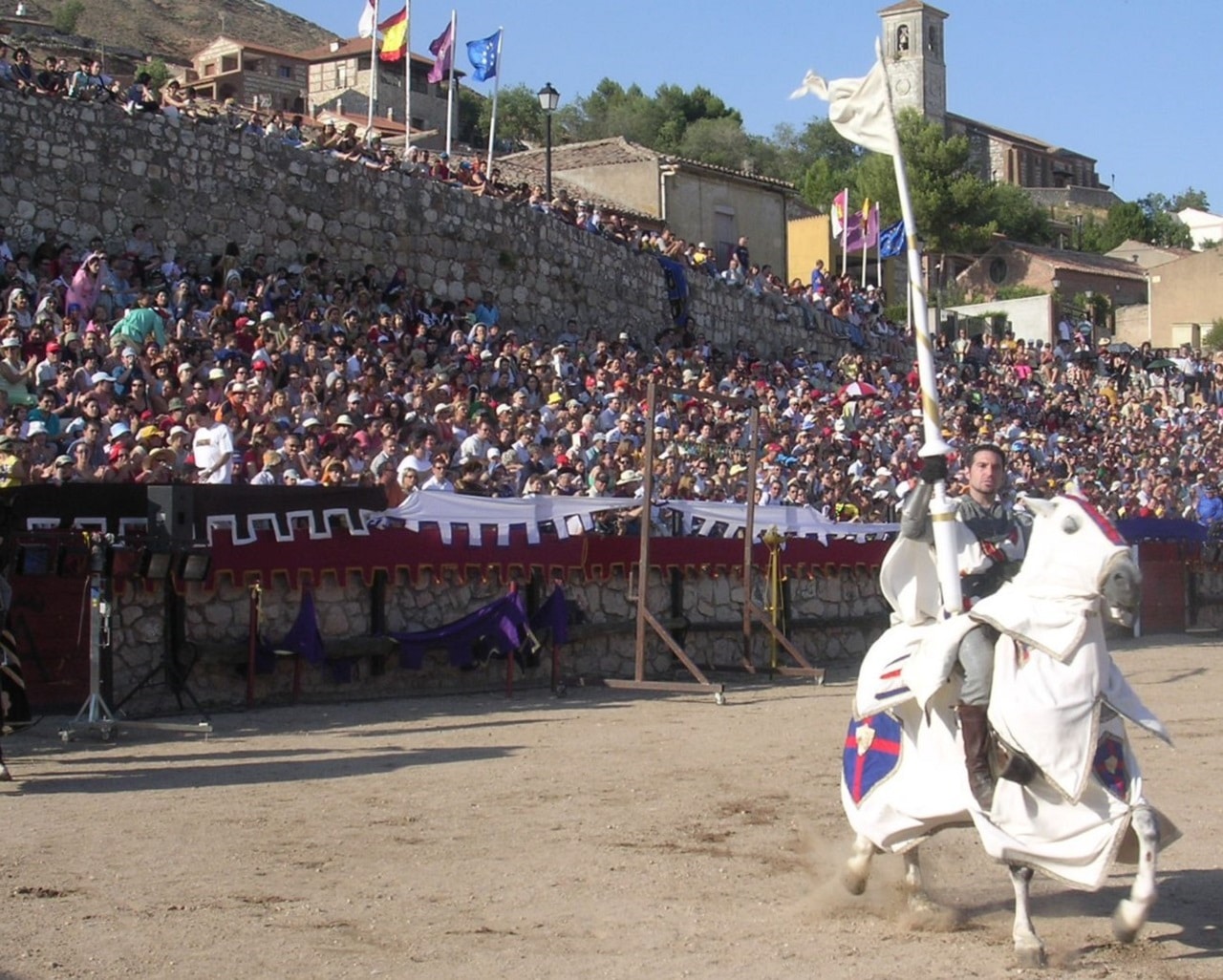
The palenque during the Hita Medieval Festival
Despite everything we have shown you, perhaps the two most unique attractions in the town are the ones that we are going to explain to you now: the wineries and the palenque. The latter, built in 1970 at the foot of the wall, is an enclosure prepared for the celebration of the medieval jousting that takes place within the framework of the Hita Festival. It has capacity for two thousand people and hosts marksmanship shows and combats on foot and on horseback.
On the other hand, the cellars of the town of Alcarreña already housed wine six centuries ago and many of them are still preserved. But now we want to talk to you about the wineries. This name is given to cave houses of medieval origin that, moreover, fulfilled, precisely, the function of storing the wine for its maceration.
They were already used in the fifteenth century and fourteen were recorded. As is logical, they were located on the hill of Hita, the oldest part of the town. And they had several rooms separated by whitewashed adobe walls. They even had a kitchen with a fireplace, a barn, and a stable. You can visit some of them on Saturdays, Sundays and holidays. Specifically, access to Bodegas del Tío Diego, Doña Bellida and Barrio Alto and the visit starts from the tourist office located in the Casa del Arcipreste.
The House Museum of the Archpriest
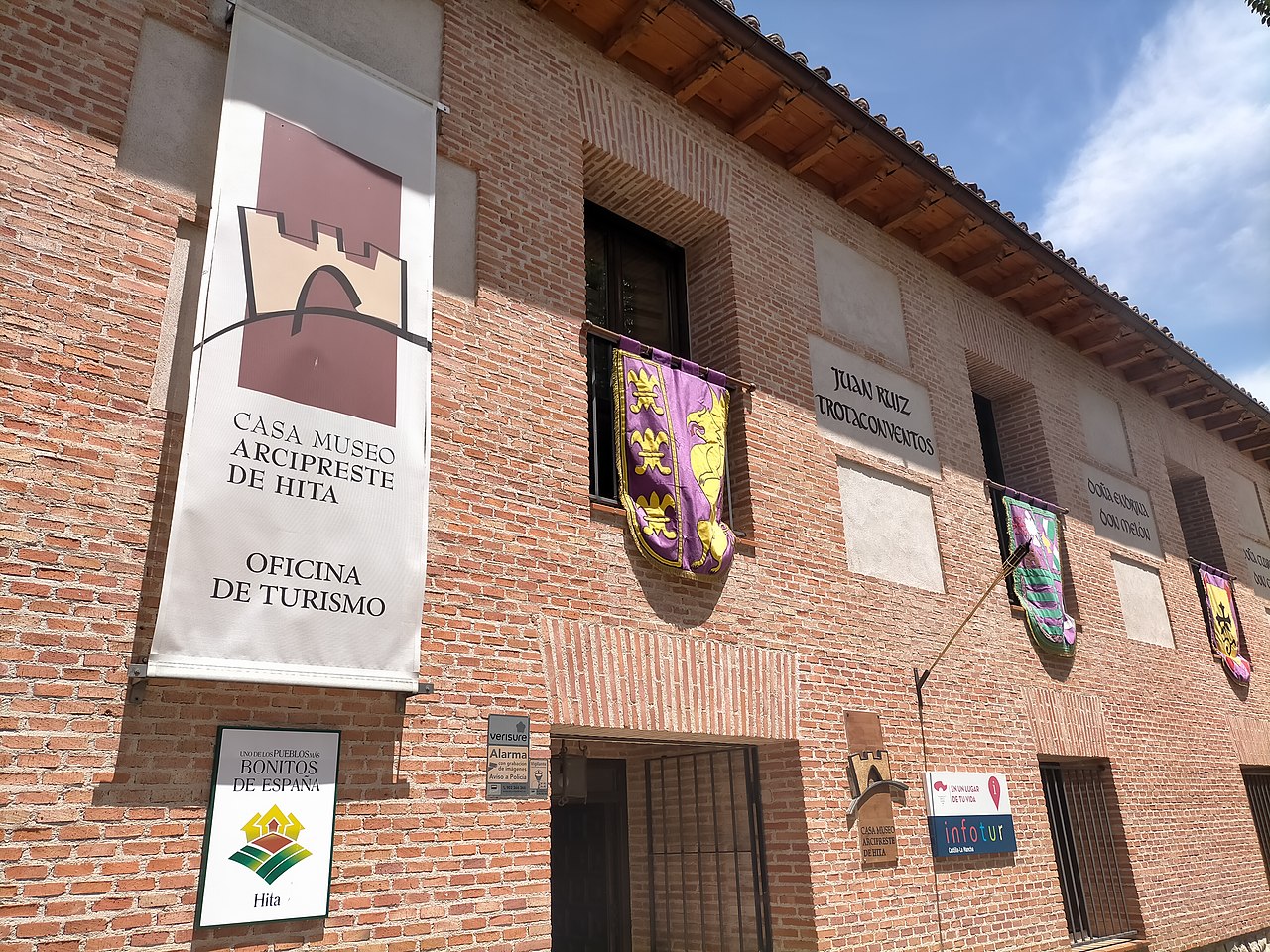
The House Museum of the Archpriest
As we have told you before, the town of Alcarria has the distinguished figure of its archpriest very present. This building shows different aspects related to the life of him and his great Good Love Book. Among them, a whole collection of books on the author and work donated by the researcher Manuel Criado del Val. But the installation offers you much more.
It also has a room dedicated to medieval festival of the town that has been held every year since 1961. It includes masks, promotional posters and many other objects. It also has the house of the Archpriest of an archaeological room and an ethnographic room. In the latter, belongings and utensils of traditional life in the area are exposed. For its part, in the first there are objects found in the vicinity of the castle of Hita and in other parts of the municipality.
Natural environment and routes through Hita
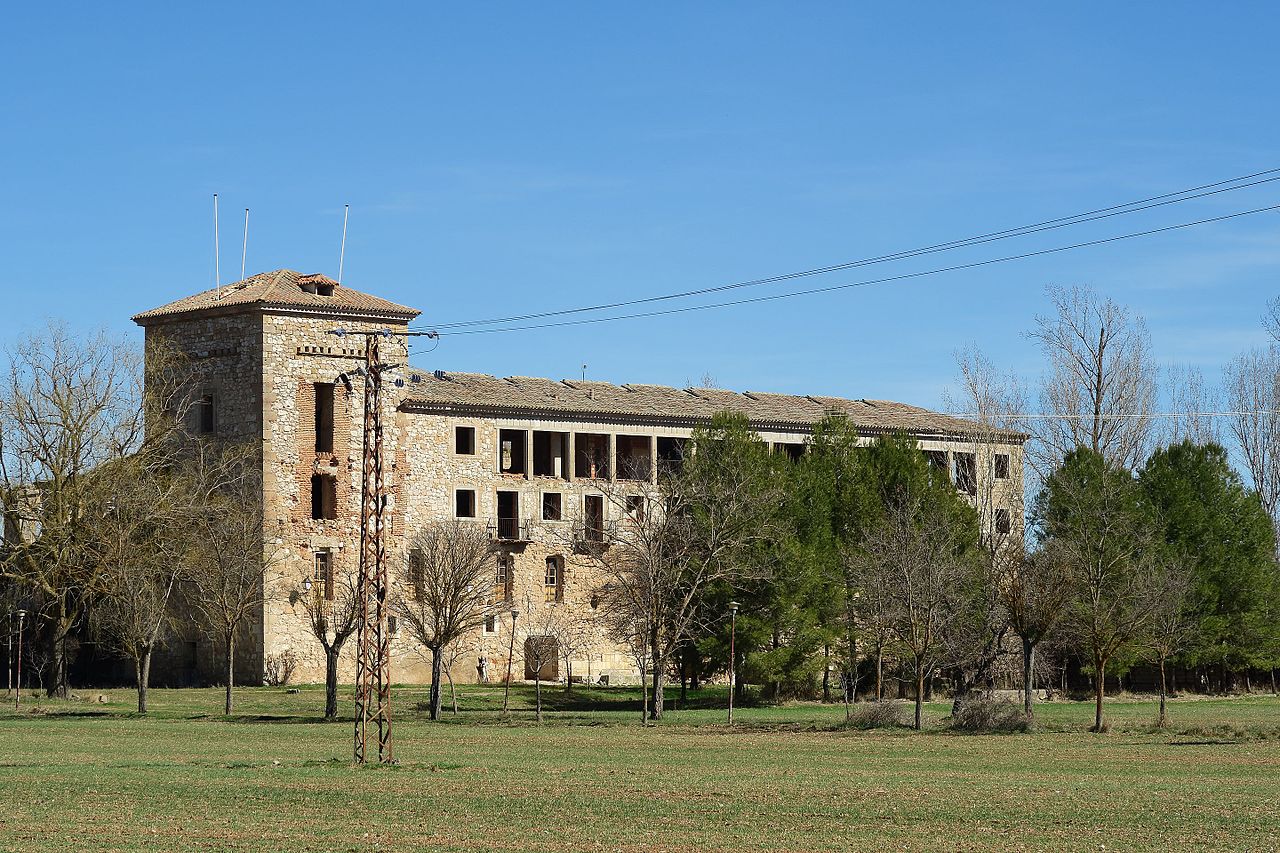
Sopetrán Romanesque Monastery
If this town in Guadalajara is beautiful, its surroundings are no less beautiful. From it you can tour the valleys of the rivers Henares and Badiel, as well as transit through the hills of La Muela, El Colmillo or La Tala. Similarly, among the natural sites in the area you have the old fountain, which supplied water to the town and is now a recreational area. But also the public mountains of Las Tajadas and La Dehesa or the environment of Valdepadilla stream.
For all these places you have beautiful hiking trails. There is a very simple five-kilometre fountain that also leads to the medieval bridge of La Paloma. Likewise, you can take a circular path around the town that is barely three kilometers long or go up to the castle grounds through the old winery neighborhood to get wonderful views of La Alcarria. You can even reach the imposing Romanesque monastery of Sopetrán, which is in the municipality.
However, if you want bigger challenges, you can do the archpriest route, which travels places normally walked by him. Among them, henbane de sorbe, Retains, brihuega or black towns of Guadalajara. Those located around the Sierra de Ayllón receive this name and are characterized by the use of slate of that color for their houses. Finally, in the Hita area you have another genuinely literary and historical route. Its about Camino del Cid, which reproduces his journey into exile told in the poem dedicated to the hero. Specifically, the section called The riot of Alvar Fáñez crosses the municipality.
In conclusion, we have told you the best things you can see and do in hita, a land of great beauty, no less history and great importance for Spanish literature. It only remains for us to advise you that, if you travel to this town, you also visit other beautiful towns in the province of Guadalajara such as Sigüenza or the smallest Trillo. Come and get to know this wonderful area of Spain.